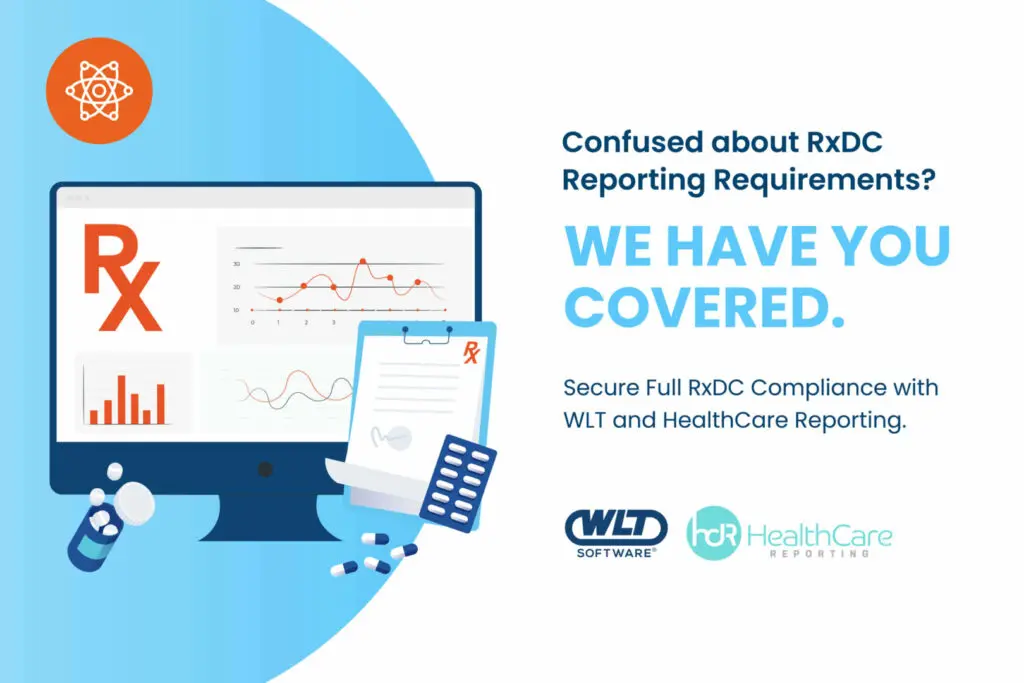The ConnXion – Volume 01, Issue 03
Reporting for 2020 and 2021 Prescription Drug Data Collection (RxDC) has passed. While a sigh of relief is warranted, don’t get too comfortable yet. More deadlines loom ahead, as carriers and TPAs who are in agreement to file on behalf of employers have imposed reporting deadlines for employers to follow (some as early as March 1st).
Keeping up with Drug Cost Reporting compliance year-to-year poses a daunting challenge for employers. But staying on top of compliance is more than worth the effort – and it doesn’t have to be difficult. WLT has partnered with Healthcare Reporting to make the Drug Cost Reporting process streamlined and painless for employers. And, with the right partner in reporting compliance, employers can expect that one good thing will ultimately lead to another.
Drug Cost Reporting Background
Passed in 2021, the Consolidated Appropriations Act (CAA) requires insurers and plans to submit cost data on pharmacy benefits and drug costs annually. And starting in 2023, the annual deadline for drug cost reporting is June 1st. The data for reporting includes each benefit plan’s 50 most costly drugs, the 50 drugs with the greatest increase in plan expenditures over the previous year, average monthly premiums, and any impact on premiums due to fees, rebates, or other remuneration paid out by drug manufacturers. Employers with fully insured or self-funded group health plans are required to report, along with grandfathered plans and governmental plans. Regardless of the plan year, information is to be reported on a calendar year basis, through the RxDC module in the Health Insurance Oversight System (HIOS).
The Benefits of Drug Cost Reporting
Keeping up with Drug Cost Reporting compliance can greatly benefit businesses by saving them from costly oversights and penalties. Take transparency, for example. When it comes to prescription costs, transparency is undoubtedly a good thing – RxDC Reporting only serves to cement that fact. Health Plans should view reporting not just as a hassle or responsibility, but also as an opportunity. Data files from the reporting process can show exactly how much (or how little) a PBM is benefitting a health plan, as well as whether it’s delivering on its promises or not. This category of insight is just one reason why health plans are encouraged to leverage their drug cost data – and are required to complete RxDC Reporting in the first place.
Following on the path of transparency and all that it can lead to, employers can look no further than lowered claim costs. Enhanced transparency in prescription drug data can boost a business exponentially by lowering claim costs. On the other side of that coin, diminished transparency only serves to exacerbate the problem of specialty medicines and high cost claimants, which in turn, can cripple businesses. According to one recently released report, IQVIA’s Global Use of Medicines 2023, “specialty medicines will represent about 43% of global spending in 2027 and 56% of total spending in developed markets”. And according to another study, high-cost claimants comprise 44 percent of total spending on Employer-Sponsored Insurance (ESI) plans. Now, more than ever, transparency in prescription drug data matters for businesses – and employees.
While high claim costs can be devastating to a business, lowered claim costs can inject much-needed life and vitality into businesses and employees. With lowered claim costs, businesses find themselves with a healthier, happier workforce that can not only afford prescriptions but also have the resources they need to find higher-quality prescription solutions. When a business can provide its employees with higher-quality prescriptive treatments at potentially lower costs, it pays dividends. By securing the most appropriate prescriptions, employees are ensured a greater opportunity for better health. In turn, this leads to less absenteeism at work and increased productivity.
WLT and HealthCare Reporting
When it comes to drug cost reporting compliance, WLT is equipped to help you navigate the complicated twists and turns. Whether it’s avoiding the $100 penalty per affected individual for non-compliance or ensuring lowered costs for your business in the future, we’ve got you covered. Our partnership with HealthCare Reporting, specifically focused on their Drug Cost Reporting solution, is designed to help TPAs and employer groups avoid penalties and achieve full drug cost reporting compliance.
Founded in 2015 to address new compliance regulations required under the Affordable Care Act, HealthCare Reporting has since evolved to meet the needs of clients and partners. Targeting the continued expansion of compliance-based requirements, HealthCare Reporting remains committed to delivering smart and affordable services, along with a high degree of technical expertise and customer care.
With transparency in prescription quality and costs, employers can expect enhanced opportunities and outcomes for their businesses and employees. And with the right partnership in drug cost reporting, they can also expect one good thing in RxDC compliance to lead to another.
To learn more about HealthCare Reporting’s Drug Cost Reporting solution, visit https://drugcostreporting.com/.
